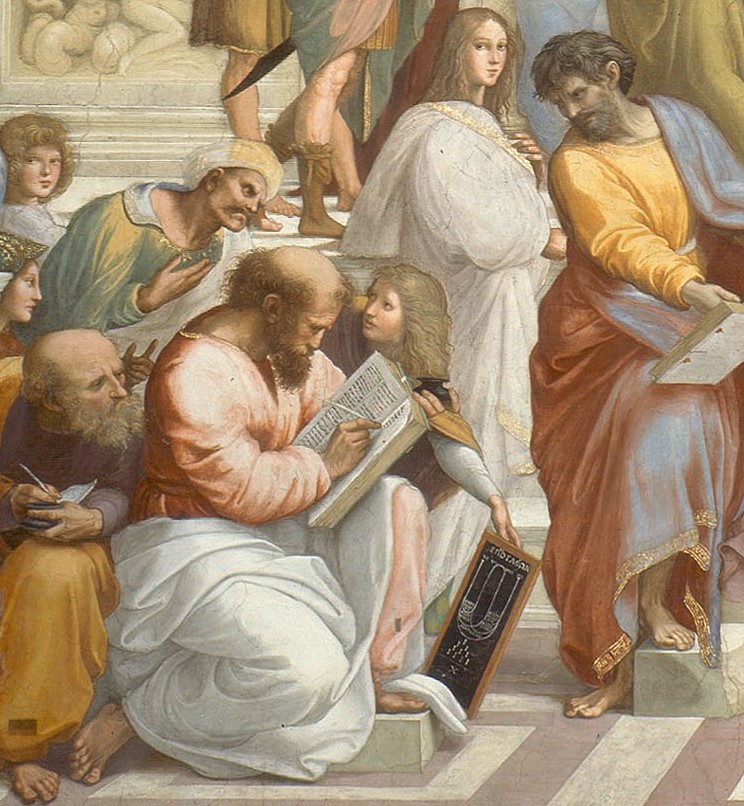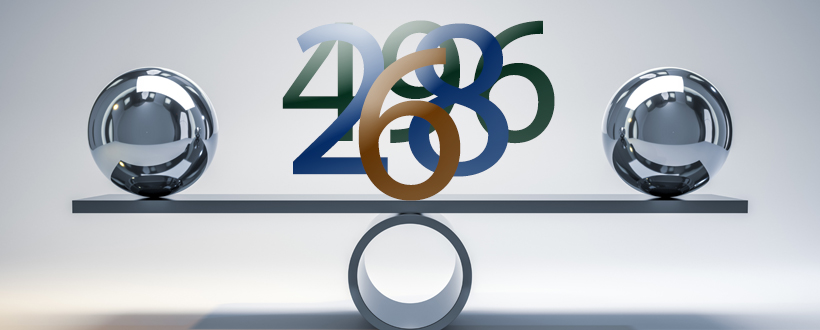The amazing story of the search for the most perfect numbers in the world
“You can’t be a real mathematician without being a little poet”
— Karl Weierstrass
The history of mathematics consists of a constant search for patterns in the magical and vast ocean of numbers. Romantic scientists have been plowing this ocean for many centuries in an effort to find currents and whirlpools hidden for the time being, and then use them for the benefit of humanity.
This is probably why mathematics is not only universal, but also an amazingly beautiful science. In it, centuries-old ancient knowledge is organically combined with modern theories and calculations. Many mathematical problems that arose before our era still have no solution. These problems have excited the minds of scientists for centuries. It is impossible to predict what the answer that has not yet been found may hide. What related problems will it help solve? Perhaps this answer will be the key to new secret knowledge that will turn our world upside down and give rise to a new technological revolution.
One of these riddles, like a mirror, reflects the entire amazing history of mathematics. This riddle is associated with a series of numbers that were called “perfect” in ancient times (ancient Greek ἀριθμὸς τέλειος). Subsequent generations of mathematicians added new numbers of this series to the treasury of human knowledge. The process is not over yet, the search continues. In addition, there are many secrets and still unresolved mysteries associated with perfect numbers. What’s so special about them?
Sparkling stars in a huge abyss of numbers
First, a little theory. A natural number is considered perfect if it is equal to the sum of its divisors other than the number itself. The smallest perfect number is 6 = 1 + 2 + 3. The next perfect number is 28 = 1 + 2 + 4 + 7 + 14. Next come the numbers 496 and 8128.

Why are these numbers called “perfect”? After all, there are many other interesting numbers with no less outstanding properties. But for the ancient Greek Pythagorean philosophers, these numbers were the most beautiful, the most special of all. To them, they were like sparkling stars in an infinite world of numbers. And indeed, there are very few perfect numbers – this is a unique phenomenon. And everything that is beautiful and rare attracts special attention.
For example, the ancient Greek philosopher and mathematician Nicomachus of Geras wrote: “Perfect numbers are beautiful. But it is known that beautiful things are rare and few in number, while ugly things are found in abundance. Almost all numbers are redundant and insufficient, while there are few perfect numbers.”
In addition, for many ancient peoples, cultures and religions, the numbers “6” and “28” had deep symbolic meaning. In Ancient Greece, the sixth place at dinner parties was considered the most honorable, it was occupied by the most respected guest. The Bible says that the world was created in 6 days. Plato also paid a lot of attention to this number in his Dialogues.
The number “28” is also not as simple as it might seem. For example, the Neopythagorean Academy of Sciences consisted of 28 members. Until recently, according to custom, the same number of members should have been included in various learned societies. And the lunar month is about 28 days.

All roads lead to prime numbers
Before Euclid, ancient mathematicians did not know any other perfect numbers except 6 and 28. But the great founder of geometry proved that a perfect number can be represented as a product of factors 2p−1 and 2p−1, and the second factor must be a prime number. This last condition is where the most difficulties arose. It is largely because of him that the history of perfect numbers has not yet been completed.
For p = 2 we get the first perfect number: 22−1 × (22−1) = 6. The second perfect number 28 corresponds to p = 3. Thanks to his formula, Euclid found two more perfect numbers: 496 for p = 5 and 8128 for p = 7.
After this, the matter stalled for many centuries. For a long time, no one was able to calculate the fifth perfect number. No one could even say whether it even existed. But in those days, people believed that whoever found the next perfect number was destined for eternal bliss. Despite such a tempting promise, no one was able to do this in one and a half thousand years.
This is not surprising. After all, the fifth perfect number is much larger than the fourth – 33,550,336. It was found only in the 15th century. It was first thought to have been done by the Dutch mathematician Hudalric Regius in 1536. But then historians discovered an unpublished manuscript by the German mathematician, astronomer and astrologer Regiomontanus, dated 1461. It contained the fifth perfect number. It also obeyed the Euclid formula for p = 13.
After this, it became clear that each subsequent perfect number is much larger than the previous one. Therefore, the search for the next perfect number for each generation of mathematicians turned into a non-trivial task. Rene Descartes aptly remarked on this matter that “perfect numbers, like perfect people, are rare.”

The mysterious insight of European mathematicians
Another 200 years later, the French mathematician and musician Maren Mersenne took part in revealing the secret of perfect numbers. In the 17th century, he was essentially the coordinator of the scientific life of Europe; he maintained active correspondence with almost all the prominent scientists of that time: Galileo, Pascal, Torricelli and many others. He was also a friend of Descartes and Fermat, and was also one of the founders of the Paris Academy of Sciences.
It is not surprising that Mersenne became interested in perfect numbers, which have excited the minds of mathematicians for centuries. In 1644, Mersenne published the Cogitata physico-mathematica, in which he argued that the following six perfect numbers should correspond in Euclid’s formula with the following p-values: 17, 19, 31, 67, 127 and 257.
At that time, it was not possible to verify Mersenne’s statement. Calculate numbers 2p−1 with the indicated values of p was not so difficult, but it was still necessary to prove that they were simple. And precisely this problem was unsolvable for mathematics at that time.
Later, in the notes of the Italian mathematics professor Cataldi, the values of the sixth and seventh prime numbers were discovered: 8,589,869,056 and 137,438,691,328. He discovered them in 1603. These numbers exactly corresponded to the p values predicted by Mersen – 17 and 19. But the Italian made this discovery several decades before the Frenchman. However, he also ran into the problem of prime numbers and could not clearly prove that he was right.
It later turned out that Cataldi actually found the next two perfect numbers. By the way, along the way, he refuted the ancient hypothesis that all perfect numbers alternately end in 6 or 8.
For historians of science, it still remains a mystery how exactly Mersen and Cataldi were able to discover the sixth and seventh perfect numbers at the then level of development of mathematics. Although today we know that Mersenne still made a mistake. He correctly predicted the values p = 31 and p = 127, but was wrong about the values p = 67 and p = 257.
After this, another important theorem appeared in the complicated history of perfect numbers. Leonhard Euler proved that Euclid’s formula describes all even perfect numbers. It is still unknown what odd perfect numbers should be, and whether they exist at all. Euler also proved that the first three values of p that Mersenne predicted did indeed produce prime numbers. Thus, the family of perfect numbers was replenished with an eighth member: 2,305,843,008,139,952,128 for p = 31.

The last computing feat and the era of computers
Then the process of searching for perfect numbers stalled again. After all, for this, scientists needed to prove the simplicity of numbers, and this had to be done through ordinary “manual” calculations. Mersenne himself stated that eternity would not be enough to verify the primality of a number that has from 15 to 20 decimal places.
The ninth perfect number was not discovered until 1883. The honor of this discovery belongs to the Perm village priest Ivan Mikheevich Pervushin. He managed to calculate the largest prime number of the form 2 for that timep−1 for p = 61. It contained 19 digits: 2,305,843,009,213,693,951. It corresponded to the perfect number 2,658,455,991,569,831,744,654,692,615,953,842,176.
No one ever performed such computational feats again, and mathematicians obtained the next perfect numbers only in the 20th century – with the help of newly appeared calculating devices. The tenth perfect number (54 digits) was discovered in 1911, the eleventh (65 digits) and the twelfth (77 digits) in 1914.
Scientists have already used computers to search for subsequent perfect numbers. In 1952, the American mathematician Robinson from the University of California wrote a program that first calculated the value of the next number 2p−1 and then checked to see if it was prime. With the help of this program, on January 30, 1952, the list of perfect numbers was replenished with the thirteenth and fourteenth items.
Mysteries remain, the story continues
Nowadays, a little more than 50 perfect numbers are known. The search continues using the full power of distributed computing.
Perfect numbers have many interesting properties. For example, they are all “triangular”. This means that, taking the perfect number of balls, we can always form an equilateral triangle from them.
But the most important secrets of perfect numbers have not yet been revealed. Until now, no one has proven that the number of perfect numbers is infinite. In addition, mathematicians are very interested in an interesting question: can odd perfect numbers exist? After all, all currently known perfect numbers are even. It has been proven that if an odd perfect number exists, then it must be greater than 101500. But it has still not been possible to discover this perfect giant, although a special computing project has been organized for this purpose.
Perfect numbers in The Simpsons
The history of perfect numbers began with the mystical numerology of the Pythagoreans. Perfect numbers have now become part of mathematical folklore. For example, one of them appeared in the cult animated series The Simpsons. In one episode, in which Marge and Homer try on the profession of marriage counselors, a huge scoreboard is shown at a baseball stadium. Spectators are asked to guess how many people attended the match. The following options are available to choose from:
A) 8191
B) 8128
C) 8208
D) No way to tell.

Do you recognize the number in option B? This is the fourth perfect number! By the way, the first and third numbers on the scoreboard were also not taken out of thin air. Option A is a Mersenne prime. This is how in mathematics they call a prime number of the form already familiar to us: 2p−1. The number C is one of the “narcissistic numbers” (mathematicians generally like to give numbers perky names). This is the name given to a number that is equal to the sum of its digits raised to a power equal to the number of these digits.
The Simpsons is generally famous for its abundance of mathematical references and allusions. The fact is that many of the writers of The Simpsons have a mathematical background. The series often features remarkable math jokes and riddles that intrigue viewers. And perfect numbers continue to be stars in the mathematical firmament to this day. Therefore, their appearance in the series is not at all an accident.
Mathematics is an amazing science. On the one hand, it has deeply penetrated our daily lives. Almost everything that surrounds us – from the simplest household items to complex electronic equipment – is somehow connected with mathematics. On the other hand, mathematicians sometimes do some “strange” things, from the point of view of an outside observer. For example, perfect numbers have been sought for centuries. To whom and how can they benefit? Mathematics always has a wonderful and universal answer to this: there are no useless calculations. Any research can sooner or later lead to an important discovery that is currently impossible to even imagine.


